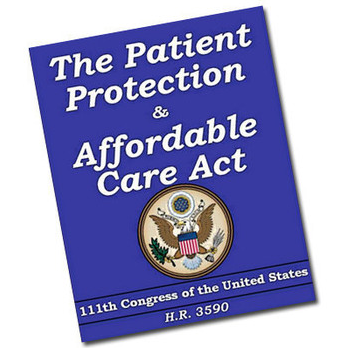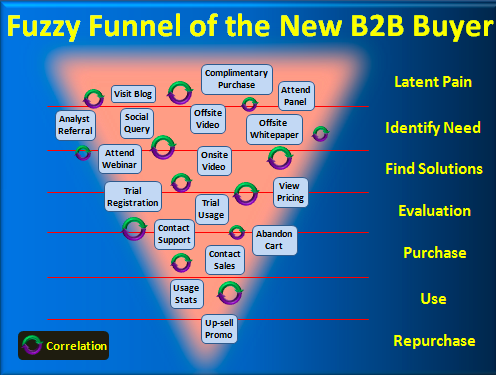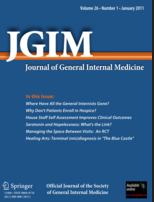B2B content marketing
Seven ways to outsmart your competition with content marketing
by Joshua Schneck

 | September 29, 2015
| September 29, 2015
Great article in Forbes on seven ways to outsmart your competition with content marketing. Brian Sutter offers a good checklist of ways to know what your competition is doing with its content marketing, and how effective it is. With this knowledge, you can fine tune your own content marketing to stay ahead of the competition. As Sutter says:
“Most of what works or doesn’t work in content marketing is public. Because of this, it’s easy to take all of your competitors’ successes and failures and leverage them for yourself.”
Sutter shows you the tools you need to learn the following about your competition’s content marketing:
• What they publish (both on their blog and anywhere else)
• How well what they publish does on social media
• Which keywords they rank for
• What they’re doing with pay-per-click advertising, which terms they bid on, what they pay for it, and their ad copy
• Whether their social media following is growing or shrinking, and how engaged they are
• How their site performs
• Where their links are and when they got them.
Of course, your own content marketing should be well thought out, focused on target audiences, convey information that helps differentiate and position your product and company and people, and be a genuine and useful source of information to your clients and prospects. If it does all that, your blog will be well read, and Google with reward you with better placement in its search results.
Creating strong content for healthcare content marketing: 3 keys
by Joshua Schneck

 | November 5, 2013
| November 5, 2013
Creating strong content for healthcare content marketing requires three things:
1. Focus on relevant pains, drivers and trends in the market.
2. Lead, don’t follow.
3. Integrate with your overall healthcare PR and marketing strategy.
As a Minneapolis healthcare content marketing agency, we follow a wide range of regulatory, legislative, industry analyst and marketing issues on behalf of our clients. Our job is to identify emerging trends and develop appropriate strategies, including content marketing. The best content is timely, relevant content that directly interests your customers and prospects. It positions you as an opinion leader and cutting-edge company.
Focus on relevant pains, drivers and trends in the market
Healthcare is driven by government regulation. Check websites for HHS, CMS,FDA, etc., or the specialized media and blogs that follow them. Or, follow the Tweets of folks who watch these agencies. Look not just at what’s happening now but what’s coming down next year or later. Your customers and prospects are interested in ways to respond to new laws or regulations, or soon will be. Also, follow the healthcare analysts at Gartner, IDC, The Advisory Board and KLAS Research. Even if you don’t subscribe to these services, the leading analysts like Judy Hanover of IDC or Tom Handler of Gartner are quoted in report summaries and news accounts. Big trends and drivers, like the move to mobile or the cloud, are being p0inted to years ahead by these analysts. Your customers are interested in how to respond to these trends. Why is your solution or expertise relevant? Share that. Often.
Lead, don’t follow
Per above, get ahead of the competition with some key drivers, regulatory issues and/or trends, and keep reminding customer and prospects that you are focused on helping them adapt and thrive in changing conditions. The Affordable Care Act and other changes are continuing to become legal requirements according to a set schedule. Insurance companies need to attract and engage individual customers on an unprecedented scale. ICD-10 will become a requirement for all providers next year. Now’s the time to share a vision for how to meet these new challenges.
Integrate with your overall healthcare PR and marketing strategy
Every selection of content you disseminate should reflect your overall PR and marketing strategy, and be integrated with all your other marketing tactics, including case studies, web content, trade shows, media placements, other social media. Have a few, important objectives and focus on them in every communication, including all content marketing.
Three Keys to B2B Content Marketing for Complex Sales
by Joshua Schneck

 | October 10, 2013
| October 10, 2013
There are three keys to B2B content marketing for complex sales – corporate law firm marketing, healthcare information technology products and services, medical device, B2B food manufacturing and other B2B products and services. These are sales with longer sales lead times and higher price tags, and rely on direct meetings and contacts to build relationships and close the deal. As a Minneapolis B2B content marketing agency, we’ve always matched PR, marketing and other services to the actual sales process of our clients. With content marketing, the opportunities for engaging prospects and clients have become better – including social media and analytic methods. We’ve found that three keys to B2B content marketing for complex sales are:
1. Have a documented content marketing strategy.
2. Match content marketing to the sales process.
3. Measure and improve the strategy as needed.
Documented content marketing strategies are more successful
According to research sponsored by Brightcove, the marketers who reported having a documented content marketing plan were more likely to say they were effective – 66%, than those who did not have a documented content marketing plan – 11%. I’d make some allowance for selection bias here, as those who invest the time and resources in developing a documented strategy might be inclined to score their efforts higher, but the point is that serious marketing efforts generally stem from a fair amount of analysis and planning. Unfortunately, content marketing is too often the flavor of the month and done on a piecemeal basis, without a formal strategy or plan.
What’s in an effective, documented content marketing strategy? At a minimum, it should set out clear goals, identify team members (including outside resources) and responsibilities, contain a SWOT analysis, and lay out basic tactics and timetable. Ideally, it should also include a description and analysis of your sales and marketing process and spell out how content marketing will support – and in some cases, lead – that process. In addition, it should identify prime topics to focus on – topics that of are interest to your prospects and customers in ways that help build a case for ultimately buying your product or service. For example, a company trying to sell software to drive efficiencies in the hospital emergency department might publish white papers, case studies, blog entries, etc. on revenue, margin, cost and quality issues for hospitals. A law firm selling intellectual property services might focus on content that explores the implication of new laws, rulings, treaties and technologies that present challenges and opportunities to their clients and prospects.
Match B2B content marketing to the sales process
As Joel York illustrates with this graphic in his excellent blog, the B2B buyer enters a “fuzzy funnel” that is built on content marketing and social media. Much of the old “solution selling” has already occurred before a sales rep has spoken with the customer. As Brent Adamson, Mathew Dixon and Nicholas Toman point out in their Harvard Business Review article:
“A recent Corporate Executive Board study of more than 1,400 B2B customers found that those customers completed, on average, nearly 60% of a typical purchasing decision—researching solutions, ranking options, setting requirements, benchmarking pricing, and so on—before even having a conversation with a supplier. In this world the celebrated ‘solution sales rep’ can be more of an annoyance than an asset. Customers in an array of industries, from IT to insurance to business process outsourcing, are often way ahead of the salespeople who are ‘helping’ them.”
The good news here is that the right mix of content marketing, matched to the actual sales process, will support your sales effort and boost inbound marketing. Careful attention to relevant government or industry standard setting developments, major trade shows, LinkedIn discussion groups, pain points and other factors will provide guidance on the mix and timing of content marketing initiatives (set out in the the documented strategy, of course). We had a patent law firm client where we focused on a key change in an obscure part of IP law. Two weeks after publishing a document on the subject, a prospect contacted the author and signed up for more than $1,000,000 in legal services.
Measure and improve the strategy as needed
In the old days of marketing, you did your best analysis, conducted effectiveness research of varying value, and prayed a lot. Today, the analytics permit fine and real time measurement of everything you’re doing in content marketing. Are you not currently measuring? You’re not alone. Only 15% of attendees as a recent content marketing conference reported good measurement. Yet, the tools are there already, via Google, your website, Twitter, etc. By tracking page views, downloads, shares, guest postings, lead generation and impact on sales, you can measure impact and ROI and make adjustments in real time. The important thing is to measure things that are critical to your actual sales process, and that offer insights of value. There’s no cookie cutter approach here. Customize it.
In addition, listen to what prospects and customers are saying in their posts, Tweets, blogs and to your sales people. If Regulation “Q” is on everyone’s mind, it makes sense to address content to that concern. With good measurement tools, and a close ear to what prospects and customer are saying, your content marketing will be relevant, timely, and most importantly, effective.
Questions? Comments?
We’d love to hear you questions or comments. Please contact me directly. As a Minneapolis B2B content marketing agency, we’re eager to keep learning and carrying on a dialogue with like-minded professionals.
Sex, Lies and Healthcare Marketing
by Joshua Schneck

 | October 1, 2013
| October 1, 2013
Sex, lies and healthcare marketing go together all too often, but the good news is that few of the drug advertising claims on TV are actually false, according to a study published in the September 2013 issue of Journal of General Internal Medicine. Yet, as other studies suggest, drug ads may be encouraging gender bias as in the case of psychoactive drug advertising (see discussion below).
Thanks to Gary Schwitzer in HealthNewsReview.org, for writing about “Content Analysis of False and Misleading Claims in Television Advertising for Prescription and Nonprescription Drugs,” by authors Adrienne E. Faerber PhD and David Kreling PhD.
In the study, the authors analyzed TV drug ads over a two-year period and found that over half of drug claims were potentially misleading. False claims accounted for only two percent of the prescription drug ads and seven percent of the nonprescription ads.
As Gary points out from the study’s findings, the average consumer may see up to 30 hours of drug advertising while spending 15-20 minutes per visit with their caregiver.
Adding to the potential problem is the gender bias reflected in some drug advertising. For example, psychoactive drug advertising portrayed women 62 percent of the time, according to a study published in a Brazilian journal. Judy Stone writes on the issue of women and drug advertising in the Scientific American blog.
As a Minneapolis healthcare content marketing firm, we care deeply about helping our clients engage their customers in credible, sustainable ways. Sex, lies and healthcare marketing may go together sometimes, but we’re also encouraged that most healthcare marketing avoids false claims. The misleading claims issue is something for the industry to work on.
Can you trust clinical practice guidelines?
by Joshua Schneck

 | September 18, 2013
| September 18, 2013
Can you trust clinical practice guidelines? Thank you, Gary Schwitzer of HealthNewsReview.org for an excellent blog post on the BMJ (British Medical Journal) article about conflicts of interest on clinical practice panels. The BMJ article details some of the types of conflicts common on the clinical practice panels that issue treatment guidelines.
As a Minneapolis healthcare PR firm dedicated to promoting the transformation of healthcare to a patient-focused, outcomes-based model, we believe it is vitally important that engaged patients receive evidence-based, unbiased information.
For example, in the controversial area of PSA testing, the article notes that The American Urological Association’s best practice update in 2009 and its 2013 practice guidelines reflected potential conflicts of interest in the context of association sponsorship, committee chair conflicts and multiple panel member conflicts. The article contrasts this with the conflict-free status of the U S Preventive Services Task Force in 2012.
Who do you believe?
While the U.S. Preventive Services Task Force found harm from routine PSA testing and no evidence of net benefit, the American Urological Association 2009 guidelines promoted routine PSA testing. In 2013, the Association revised its guidelines to reflect a more conservative approach to PSA testing.
As noted elsewhere, studies have found troubling patterns of conflicts of interest in practice guideline panels, and or lack of full disclosure of those conflicts. Part of the answer is the new Physician Sunshine Act, which we’ve written about previously, that requires the reporting of financial payments to physicians by pharmaceutical and medical device companies.
Avoiding Red Flags
The BMJ authors recommend that professional journals avoid the following red flags:
-
Sponsor(s) is a professional society that receives substantial industry funding;
-
Sponsor is a proprietary company, or is undeclared or hidden
-
Committee chair(s) have any financial conflict*
-
Multiple panel members have any financial conflict*
-
Any suggestion of committee stacking that would pre-ordain a recommendation regarding a controversial topic
-
No or limited involvement of an expert in methodology in the evaluation of evidence
-
No external review
-
No inclusion of non-physician experts/patient representative/community stakeholders
-
*Includes a panelist with either or both a financial relationship with a proprietary healthcare company and/or whose clinical practice/specialty depends on tests or interventions covered by the guideline.
Please take note, healthcare PR professionals, healthcare marketing professionals and journalists. And for full disclosure, this Minneapolis healthcare PR firm works for the parent company of an online source of unbiased medical reference and clinical recommendations. The client had nothing to do with the writing of this blog post, and I take full responsibility for its contents.
Healthcare Transformation and Content Marketing
by Joshua Schneck

 | September 17, 2013
| September 17, 2013
Healthcare transformation refers to the fundamental change going on in the healthcare industry, especially the ongoing transformation from a fee-for-services to an outcomes-based model. Transformation is being driven by meaningful use, value-based purchasing, accountable care organizations (ACO’s), the Affordable Care Act (Obamacare), and advanced clinical decision support. Summed up, these changes are about aligning incentives and using advanced technology to improve outcomes. For a Minneapolis healthcare content marketing firm, there is much to communicate about, and we’re excited to be part of this transformation.
The first step is to understand the bigger issues. As a Minneapolis industry analyst relations firm, we work closely with a number of the top research firms, including Gartner, IDC and The Advisory Board. Each of these organizations has written extensively about healthcare transformation. In addition, some of the better sources of information about healthcare transformation are The Center for Healthcare Research and Transformation, The Joint Commission Center for Transforming Healthcare, and The Institute for Health Technology Transformation.
It’s important to follow the law-making and rule-making processes in government. As a Minneapolis government relations firm, we develop and implement effective government relations strategies. We keep clients up to speed on legislative and regulatory trends and developments, and represent our clients before Congress and Federal agencies. Snow has worked with the FDA, HHS, OMB and other agencies. Snow prepares comment letters to Federal and state agencies, meets with Congressional staff to share perspective and seek assistance, sets up meetings with policy makers, produces testimony and whitepapers, and arranges for legislation to be introduced.
Based on well grounded, current knowledge, we provide strategy development and implementation. Suppliers to the healthcare market must communicate how their products and services will help providers meet the new challenges and opportunities in healthcare. Providers must reach out to patients in new ways, emphasizing better outcomes and patient engagement.
For a Minneapolis healthcare PR firm like ourselves, we understand the need to help clients create strategies for thought leadership through content marketing, PR, SEO and SEM and other, integrated approaches. Working with our clients, we help them create original content to drive aggressive content marketing that builds recognition for our client’s solutions, products, people and perspective, while also driving improved SEO and social media.
Launch New Company with B2B PR and Content Marketing
by Joshua Schneck

 | September 10, 2013
| September 10, 2013
Like many Minneapolis B2B PR firms, Snow Communications uses Google analytics, SEO strategies, and related digital marketing technologies; but we understand that content is everything. We know a good story when we see it. Maybe that comes from having been a reporter and writer for The New York Times, The Star Tribune, Radio Sweden and other news organizations. Having been an editor, I have a good idea of what editors want, and don’t want. Good B2B PR firms figure out how take a story that is not fundamentally glamorous – and often far from it, and turn it into something a publication’s subscribers want to read.
In addition, we’ve launched dozens of new companies successfully.
Content Marketing: The Gift That Kept Giving
When we launched new company Zepol, we realized right away that this was a content marketing play – even before that term was in wide use. Zepol publishes trade data – data about the movement of goods from country to country, and that data is of great interest to a lot of people at companies and other organizations.
We made successful pitches about Zepol, its rapid growth, its value to its customers and related themes. But the gift that kept giving was where we offered recognized publications the opportunity to provide Zepol trade data in their publication and on their website. This became a recurring source of promotion for Zepol long after our work with them was complete.
Please read our case study
See details in our Zepol case study.




